
How to Use Arduino Mega ADK (Rev3): Examples, Pinouts, and Specs
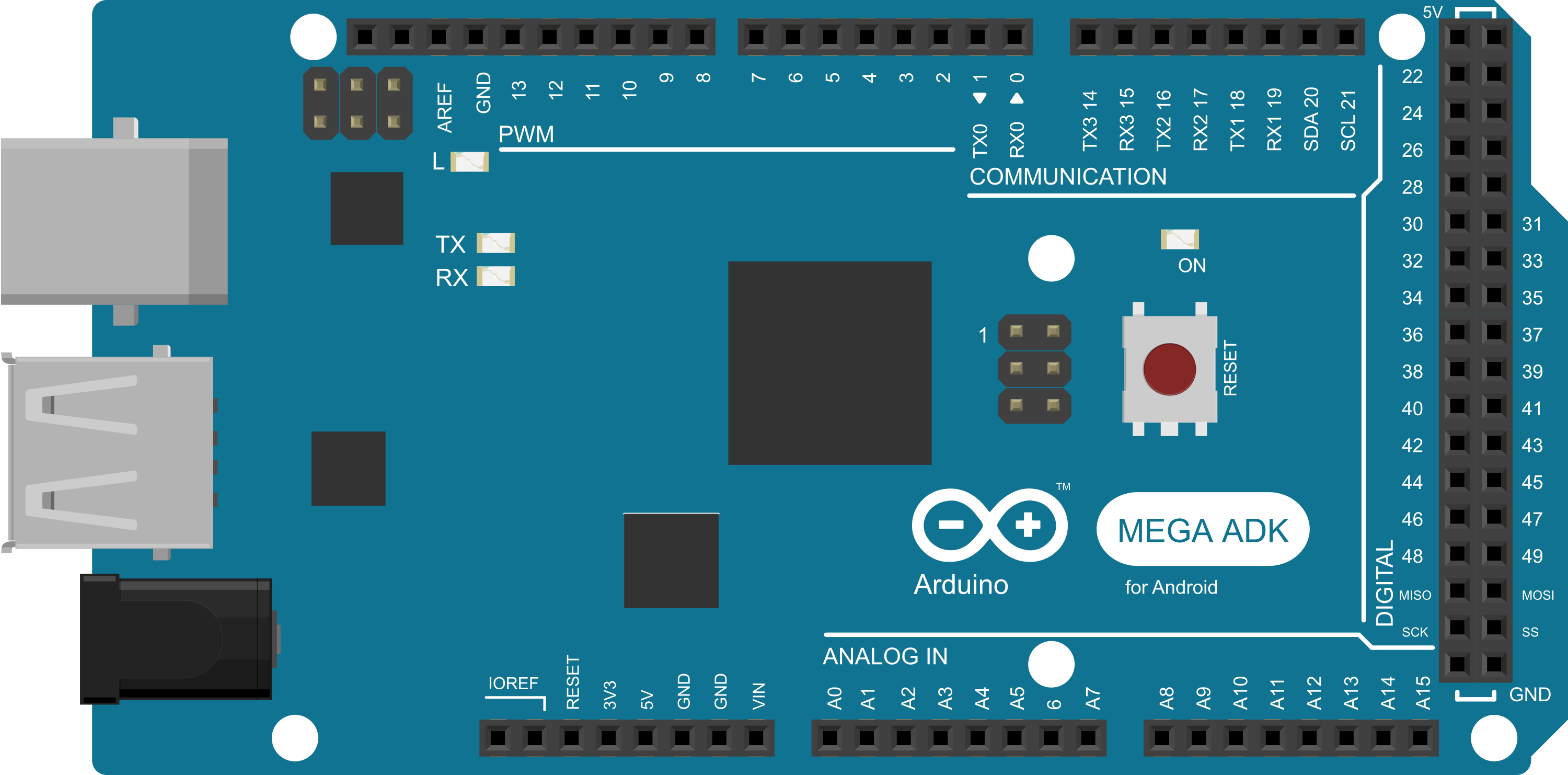
 Design with Arduino Mega ADK (Rev3) in Cirkit Designer
Design with Arduino Mega ADK (Rev3) in Cirkit DesignerIntroduction
The Arduino Mega ADK (Rev3) is a microcontroller board based on the ATmega2560. It is specifically designed for building accessories for Android devices and is compatible with Android's Accessory Development Kit (ADK). The board provides a vast array of I/O pins and is ideal for projects that require managing numerous sensors, actuators, and other electronic components. Common applications include robotics, home automation systems, and complex interactive installations.
Explore Projects Built with Arduino Mega ADK (Rev3)
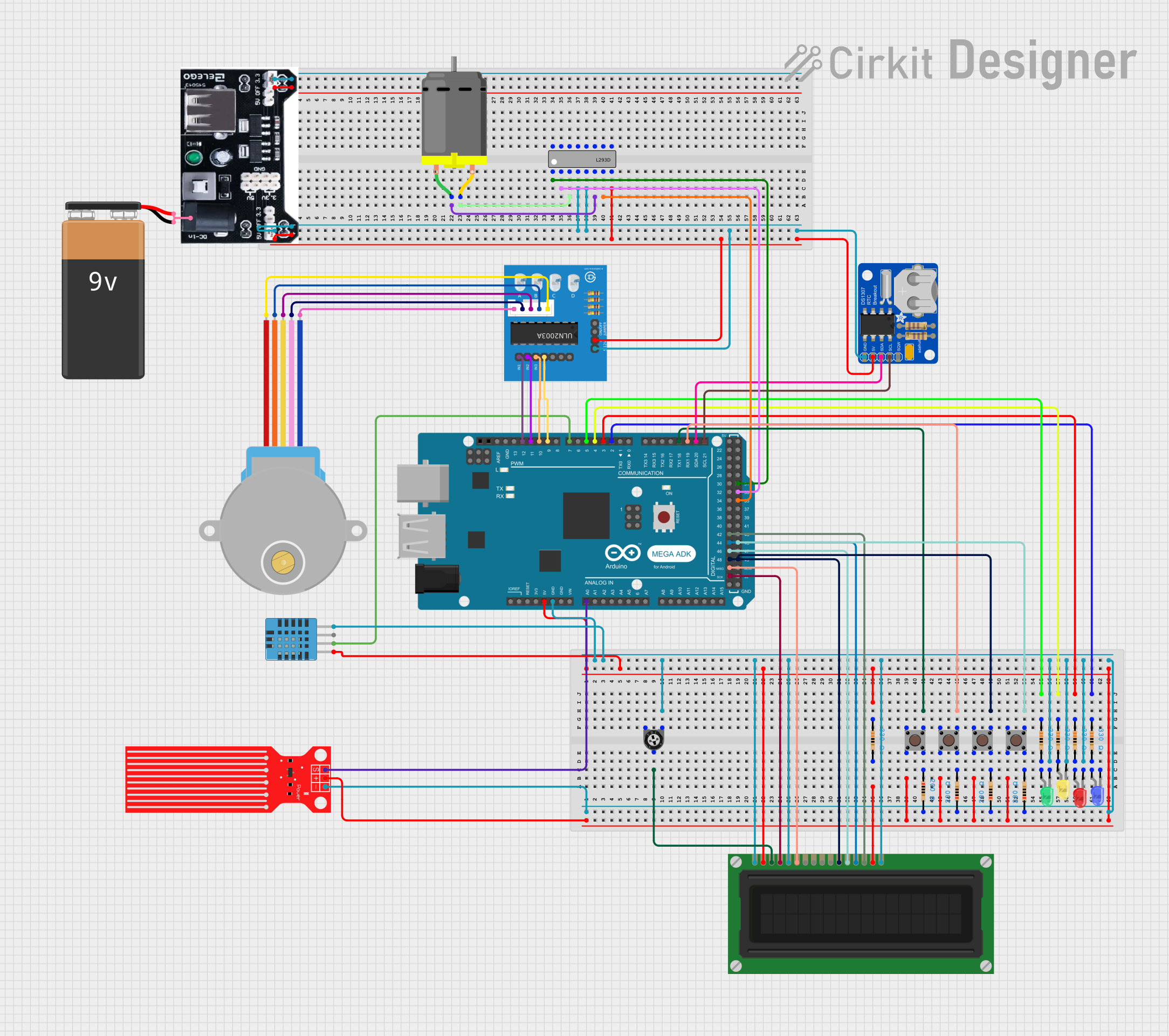
 Open Project in Cirkit Designer
Open Project in Cirkit Designer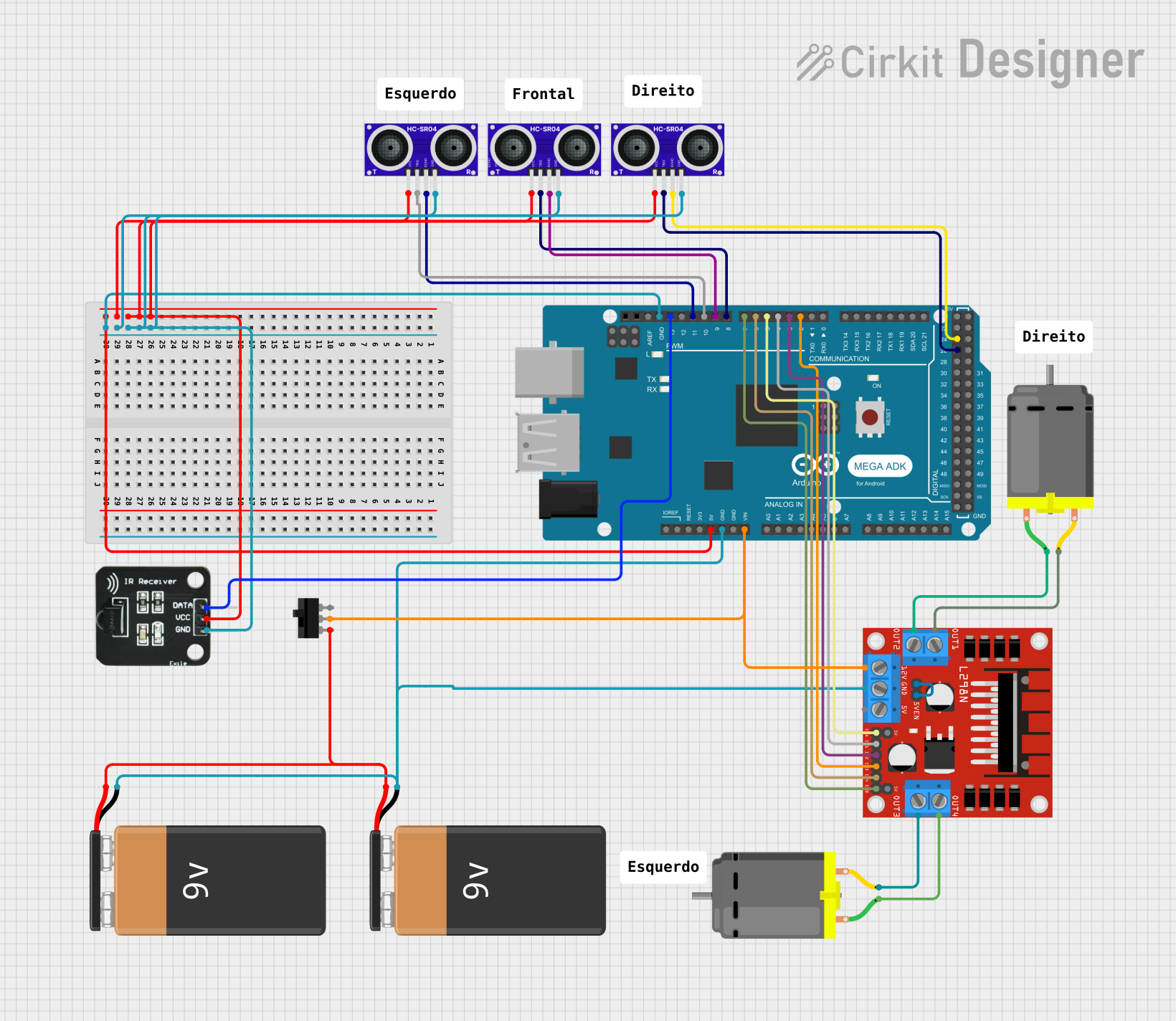
 Open Project in Cirkit Designer
Open Project in Cirkit Designer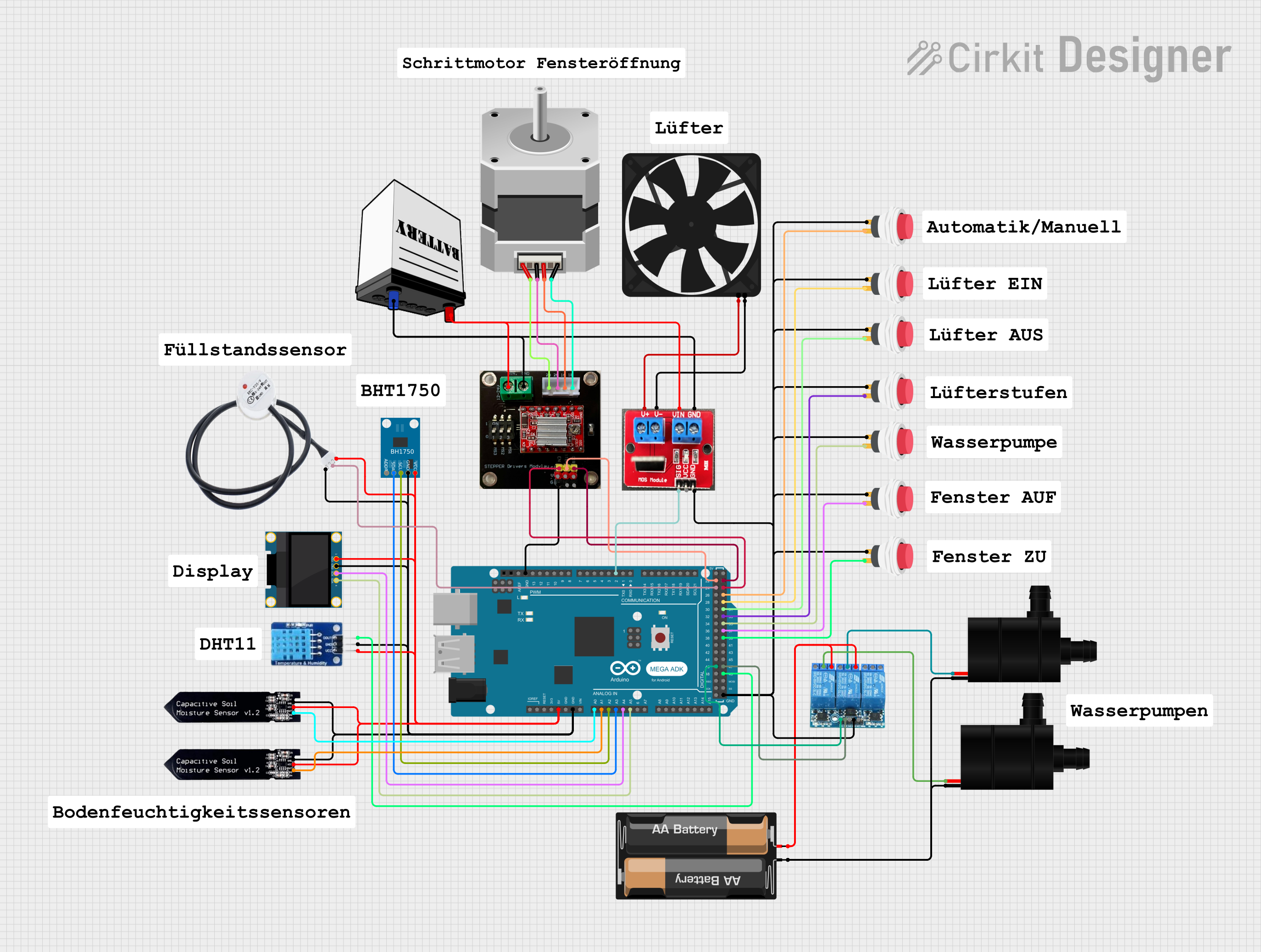
 Open Project in Cirkit Designer
Open Project in Cirkit Designer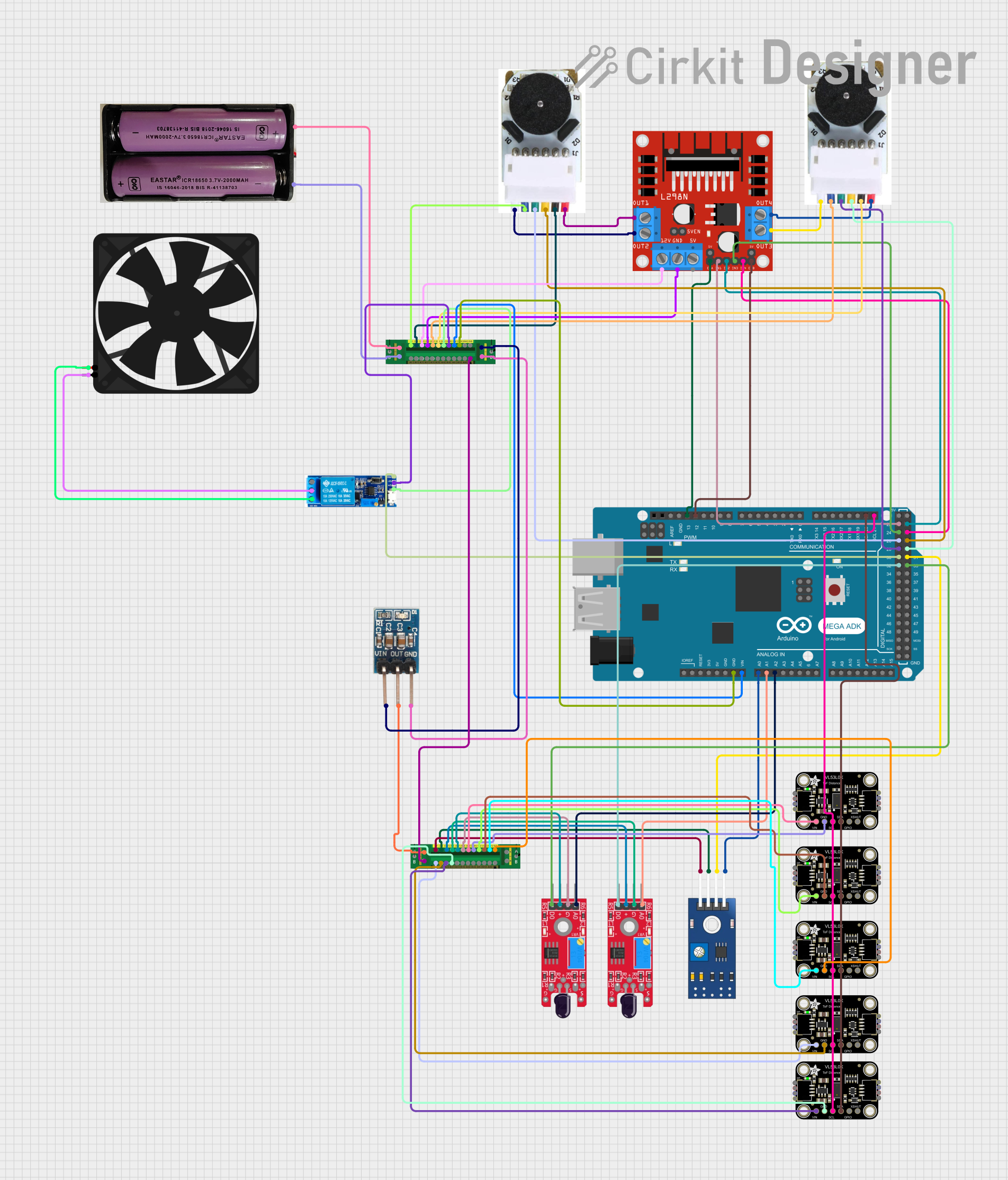
 Open Project in Cirkit Designer
Open Project in Cirkit DesignerExplore Projects Built with Arduino Mega ADK (Rev3)

 Open Project in Cirkit Designer
Open Project in Cirkit Designer
 Open Project in Cirkit Designer
Open Project in Cirkit Designer
 Open Project in Cirkit Designer
Open Project in Cirkit Designer
 Open Project in Cirkit Designer
Open Project in Cirkit DesignerTechnical Specifications
Key Technical Details
- Microcontroller: ATmega2560
- Operating Voltage: 5V
- Input Voltage (recommended): 7-12V
- Input Voltage (limits): 6-20V
- Digital I/O Pins: 54 (of which 15 provide PWM output)
- Analog Input Pins: 16
- DC Current per I/O Pin: 20 mA
- DC Current for 3.3V Pin: 50 mA
- Flash Memory: 256 KB of which 8 KB used by bootloader
- SRAM: 8 KB
- EEPROM: 4 KB
- Clock Speed: 16 MHz
- USB Host: Yes (for connecting with Android devices)
Pin Configuration and Descriptions
| Pin Number | Function | Description |
|---|---|---|
| 1-54 | Digital I/O | Digital input/output pins, PWM available on pins marked with ~ |
| A0-A15 | Analog Input | Analog input pins |
| GND | Ground | Ground pins |
| 5V | Power | Provides 5V output |
| 3.3V | Power | Provides 3.3V output (50 mA max) |
| VIN | Power | Input voltage to Arduino when using an external power source |
| RESET | Reset | Resets the microcontroller |
| ICSP | In-Circuit Serial Programming | Used for bootloader flashing and direct programming |
Usage Instructions
Integrating with a Circuit
- Powering the Board: The Arduino Mega ADK can be powered via the USB connection or with an external power supply. The power source is selected automatically.
- Connecting I/O Pins: Connect sensors, actuators, and other components to the digital and analog pins as required by your project. Ensure that the components are compatible with the voltage and current specifications of the board.
- Programming the Board: Use the Arduino IDE to write and upload sketches to the board. Select "Arduino Mega or Mega 2560" as the board type, and the appropriate port for your board.
Best Practices
- Always disconnect the board from the power source before making or altering connections.
- Use a current limiting resistor when connecting LEDs to digital pins to prevent damage.
- Avoid drawing more than 50 mA from the 3.3V pin.
- Ensure that the total current through all I/O pins does not exceed the limit specified in the technical specifications.
Example Code for Arduino UNO
// Blink an LED connected to pin 13
void setup() {
pinMode(13, OUTPUT); // Set pin 13 as an output
}
void loop() {
digitalWrite(13, HIGH); // Turn the LED on
delay(1000); // Wait for a second
digitalWrite(13, LOW); // Turn the LED off
delay(1000); // Wait for a second
}
Note: The above code is for demonstration purposes and is compatible with the Arduino Mega ADK as well.
Troubleshooting and FAQs
Common Issues
- Device not recognized: Ensure that the drivers are installed correctly and the USB cable is functioning.
- Sketch not uploading: Check the selected board and port in the Arduino IDE. Ensure the bootloader is not corrupted.
- Insufficient power: If using many peripherals, ensure the power supply can provide adequate current.
Solutions and Tips
- Driver Installation: Make sure to install the Arduino drivers that come with the Arduino IDE or download them from the official Arduino website.
- Bootloader Issues: If the bootloader is corrupted, use an external programmer to reflash the bootloader through the ICSP header.
- Power Requirements: Use an external power supply with sufficient current rating when using multiple high-power components.
FAQs
Q: Can I connect multiple Android devices to the Arduino Mega ADK? A: No, the USB host interface supports only one Android device at a time.
Q: Is the Arduino Mega ADK compatible with all Android devices? A: Compatibility depends on the Android device's support for the ADK. Check the device specifications for ADK support.
Q: How do I use the USB host feature? A: To use the USB host feature, you will need to develop an Android application that communicates with the board using the Android Open Accessory protocol. The Arduino website provides libraries and examples for this purpose.
For further assistance, consult the Arduino community forums or the extensive online resources available for the Arduino Mega ADK.